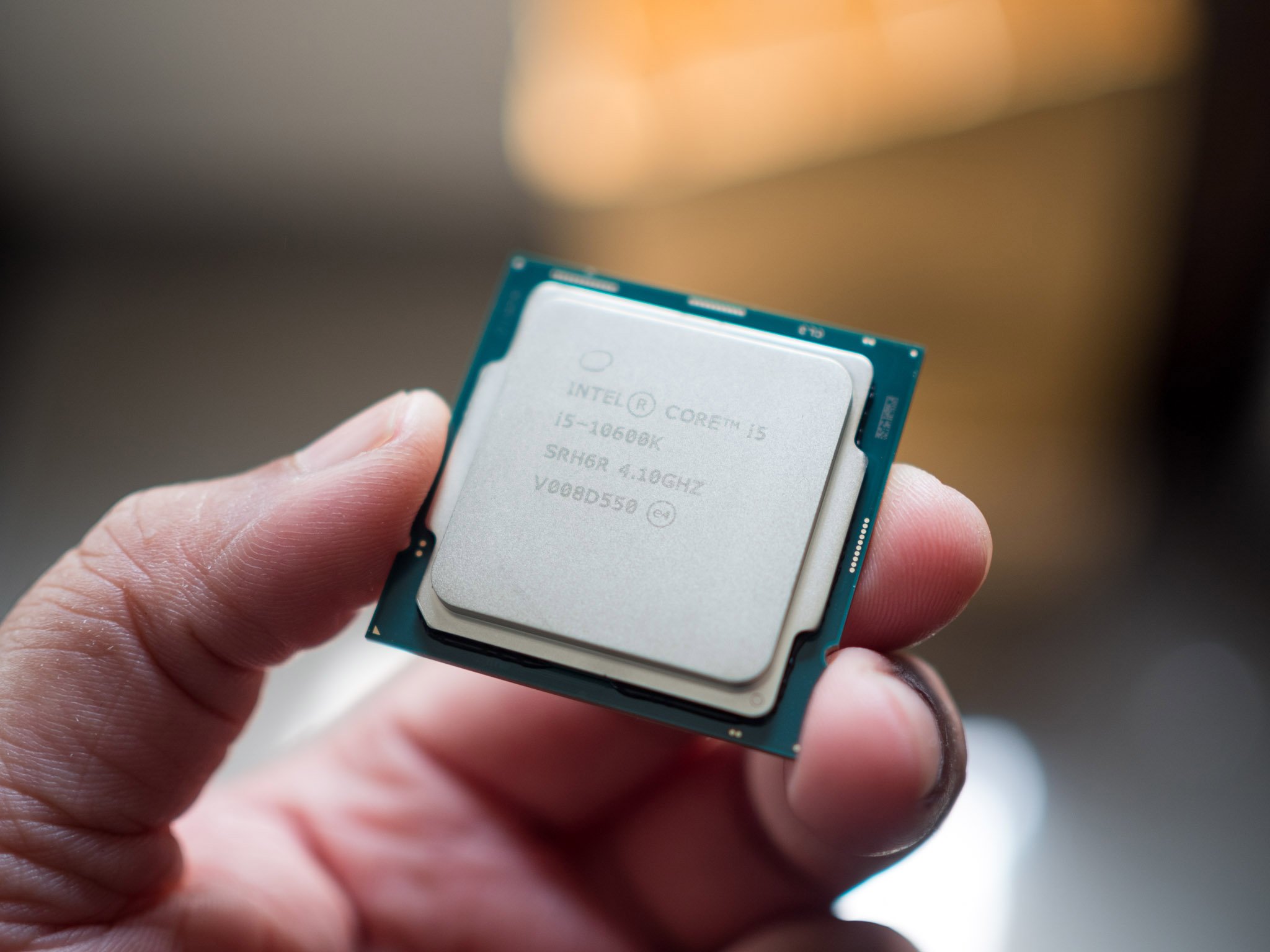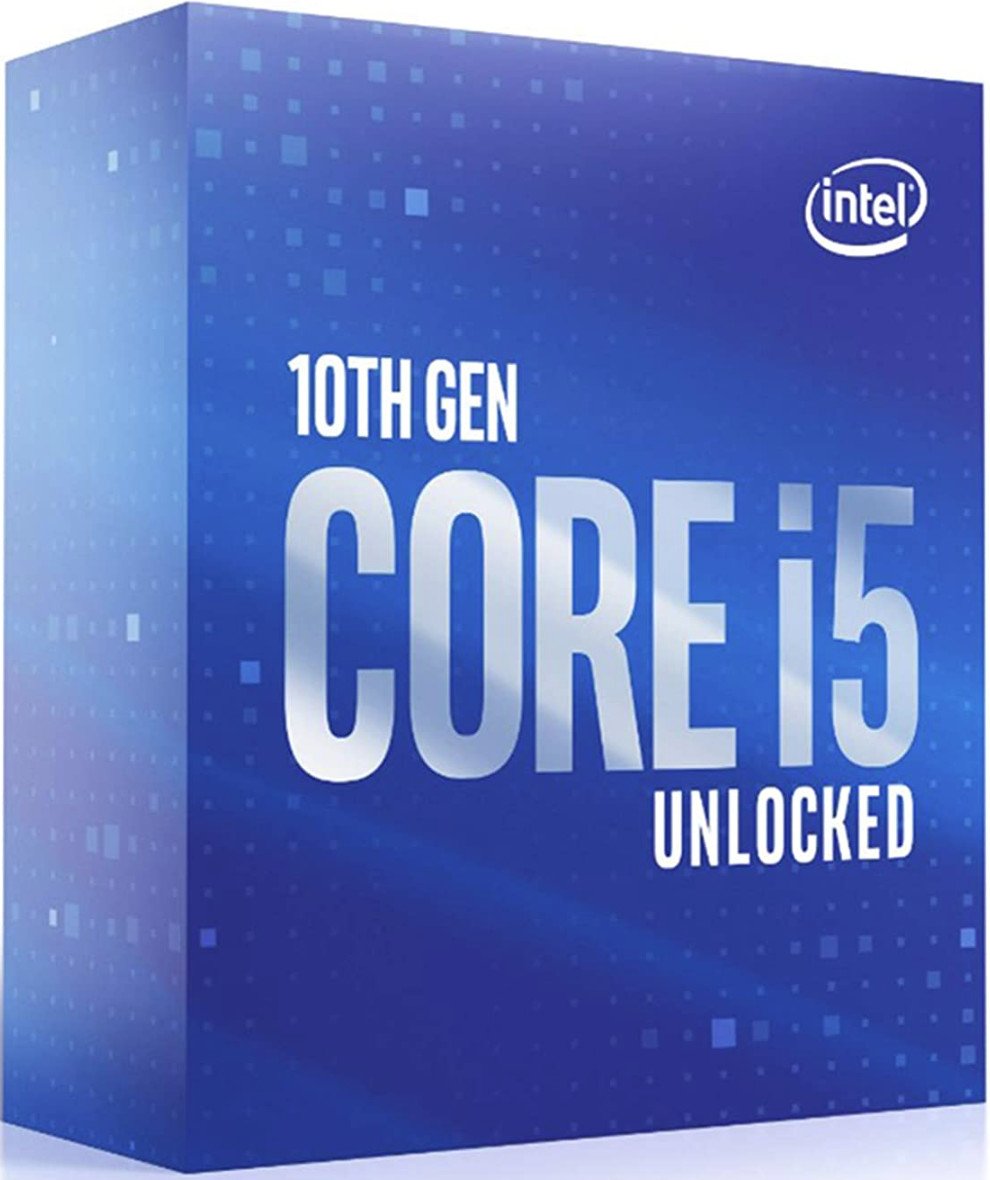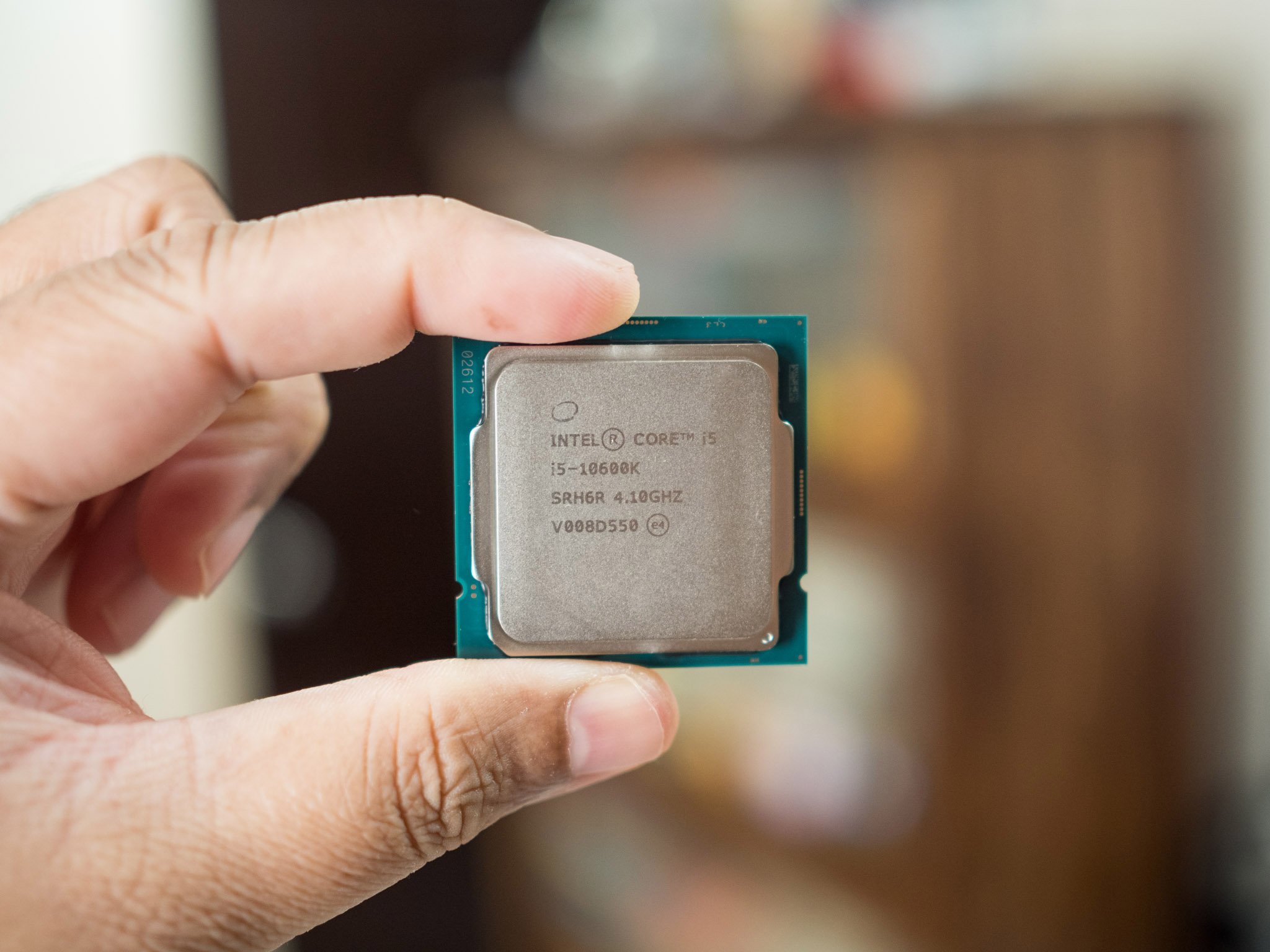The Core i5-10600K delivers outstanding performance for $300, making it the ideal option for gamers.
The Comet Lake-S series isn't a radical rethinking of Intel's desktop lineup. Intel is offering sizable gains from Coffee Lake, but the CPUs are still fabricated on a 14nm node and aren't as efficient as what AMD is offering in this category.
That said, the best desktop PCs all feature Intel's CPUs, and that's mainly because Intel has a clear edge when it comes to gaming. Intel is betting on gaming prowess as the key differentiator for the Comet Lake-S series, and we've already seen how well the flagship Core i9-10900K and Core i7-10700K fare in this regard.
With the Core i5-10600K, Intel is setting its sights on the $300 segment. The Core i5-10600K features a 6-core 12-thread design with a 125W TDP, and while the mid-range CPU doesn't have the Core i9-10900K's Thermal Velocity Boost or Turbo Boost 3.0, you get Hyper-Threading enabled this time, a big deal considering the feature was exclusive to Intel's high-end designs.
The Core i5-10600K promises to deliver the best gaming performance in this category, and with the chip positioned against AMD's mighty Ryzen 5 3600X and the Ryzen 7 3700X, it has a lot to live up to. So let's take a look at what the Core i5-10600K has to offer, and why it may just be the ideal Intel CPU in 2020.
Intel Core i5-10600K
Bottom line: The Core i5-10600K delivers better gaming performance than any AMD CPU in this category, making it the default choice for gamers. It's also great for single- and multi-threaded workloads, is ideal for overclocking, and offers better value than the Core i9 or i7 models.
The Good
- Outstanding gaming performance
- Decent overclocking potential
- Better value than Core i9 or i7 models
- Great at single- and multi-threaded workloads
The Bad
- No bundled cooler
- No PCIe 4.0
- Needs new Z490 series motherboard
$304 at Amazon $300 at B&H Photo $310 at Newegg
Intel Core i5-10600K Specs
Intel has a clear progression across the Comet Lake-S series, with the Core i9-10900K offering a 10-core 20-thread design and the Core i7-10700K switching to an 8-core 16-thread option. The Core i5-10600K sits one tier below the Core i7, and as such, it gets six cores and 12 threads.
The Core i5-10600K has a base frequency of 4.10GHz — higher than the Core i9 and i7 models — but it doesn't quite manage to hit 5GHz in turbo. That's understandable given Intel wants to limit that particular feature to the Core i9 and i7 variants, but seen as a whole, the Core i5-10600K ticks all the right boxes:
| Category | Intel Core i5-10600K |
|---|---|
| Cores/Threads | 6/12 |
| Base Frequency | 4.10GHz |
| Turbo Boost 2.0 | 4.50GHz (all cores) |
| Turbo Boost 2.0 | 4.80GHz (two cores) |
| Integrated Graphics | Intel UHD Graphics 630 |
| Memory | DDR4-2666 |
| TDP | 125W |
| L3 Cache | 12MB |
| Manufacturing Node | 14nm |
| Socket | LGA1200 |
Intel Core i5-10600K Comet Lake-S overview
Intel has eight distinct CPUs in the Comet Lake Core series and five variants across the Pentium and Celeron lines. But because Intel offers several versions of its CPUs, including unlocked designs aimed at gamers, models without integrated graphics, and low-power options, we end up with 32 unique SKUs in the Comet Lake-S launch lineup.
As a refresher, here's what each suffix translates to:
- K: Unlocked design with integrated graphics
- KF: Unlocked design without integrated graphics
- No suffix: Regular model with integrated graphics — no overclocking here
- F: Regular model without integrated graphics
- T: Low-power option
From the naming convention, we can make out that the Core i5-10600K is an unlocked part that includes integrated graphics — the Intel UHD Graphics 630. A significant change with Comet Lake-S is the switch to the LGA1200 socket, requiring the use of the new Z490 series motherboards. That means that if you're using an LGA1151-based Z270 or Z390 board, you won't be able to slot in the Core i5-10600K.
Intel is using higher frequencies to increase performance, leading to power-hungry CPUs.
Intel's failure to switch to the 10nm node is what led to the new socket. The LGA1200 essentially has 49 additional pins to be able to deliver more power to the chipset. That's because with Intel still retaining the 14nm node for Comet Lake-S, the only way to deliver better performance figures is by increasing the frequencies. That's why you'll find a noticeable uptick in base frequencies across the board with Comet Lake-S.
For instance, the Core i5-10600K has a base frequency of 4.1GHz, while last year's i5-9600K had a more modest 3.70GHz. The TDP has also been increased from 95W to 125W, leading to decreased energy efficiency figures from the previous generation. Intel is effectively using a 14nm++++ node with Comet Lake-S, and the one advantage here is that it is a mature process.
That said, Intel is making a few tweaks: Comet Lake-S designs use a thinner die, a thicker heat spreader, and a solder thermal interface material to improve thermal performance. You won't find IPC gains with Comet Lake-S, with Intel focusing its attention instead on getting the maximum out of the 14nm node. By increasing the frequencies and better thermal management, it has achieved just that.
Intel Core i5-10600K Performance
There are a few notable additions with the Core i5-10600K that make it a much more enticing option over its predecessor. Intel has added Hyper-Threading, and it is also allowing the ability to enable or disable Hyper-Threading on a per-core basis, giving users more control in this particular area. Let's find out how the Core i5-10600K holds up in real-world scenarios.
| Category | Intel Core i5-10600K |
|---|---|
| Chipset | Intel Core i5-10600K |
| Motherboard | Gigabyte Aorus Z490 Master |
| Cooling | Corsair iCUE H115i RGB Pro XT |
| Memory | 4 x 8GB Corsair Vengeance Pro (DDR4-3000) |
| Storage | 1TB Samsung 860 QVO |
| Graphics | NVIDIA GeForce RTX 2080 FE |
| PSU | Corsair RM850x |
With gaming being the key differentiator for the 10th Gen Comet Lake-S series, it's no wonder that the Core i5-10600K holds up incredibly well in this area. The Core i5-10600K goes up against the Ryzen 5 3600X and the Ryzen 7 3700X, and it manages to outmatch AMD by a significant margin when it comes to gaming.
The Core i5-10600K is the most powerful $300 CPU for gaming.
The Core i5-10600K delivers 15 to 18% better performance over the Ryzen 5 3600X for 1080p games and a 12% uptick over the Ryzen 7 3700X. What makes things that much more interesting is that the Core i5-10600K also carves out a healthy lead over the 12-core/24-thread Ryzen 9 3900X to the tune of 9%, making it the standout winner. Of course, you'll start seeing diminishing returns as you increase the resolution to 1440p and 4K as the GPU starts playing a significant role.
It's clear that Intel's focus on gaming has allowed Comet Lake-S designs to eke out a lead over their AMD counterparts, and the Core i5-10600K is a fantastic choice in this category. It is on part with the Core i7-9700K and even outmatches the Core i9-9900K in a few scenarios, and the fact that you're getting this level of performance on a $300 CPU is spectacular.
The Core i5-10600K is almost on par with the Core i9-10900K in terms of gaming performance, and there's a minute 3% difference between the two in this area. That makes the Core i5-10600K a particularly great choice for gamers as it is available for around half the price of Intel's flagship Core i9-10900K. If you're primarily interested in gaming, then the Core i5-10600K is a better choice over the Core i7 or i9 designs.
Of course, the Core i5-10600K doesn't measure up to the Ryzen 7 3700X or the Ryzen 9 3900X when it comes to multi-threaded use cases, but it is on par with the Ryzen 5 3600X in this regard. That said, it holds its own for single-threaded workloads, so for most Windows applications, you shouldn't see a lot of difference.
But the one area where the Core i5-10600K falls short is power consumption. With Intel effectively relying on higher frequencies to deliver better performance, the CPU is power-hungry. The 7nm Ryzen alternatives fare much better in this regard, but having said that, the Core i5-10600K has plenty of headroom for overclocking down the road.
Intel Core i5-10600K The competition
AMD made huge inroads into the value segment over the last two years with its Ryzen designs, and the $208 Ryzen 5 3600X is a standout in this segment. The Ryzen 5 3600X debuted for $250 but is now selling for $208. The CPU has six cores and 12 threads — just like the Core i5-10600K — and it delivers better energy efficiency and slots into AMD's existing AM4 platform. You also get a cooler in the box, and while the Ryzen doesn't come close to the Core i5-10600K when it comes to gaming, it is a great value.
Then there's the $300 Ryzen 7 3700X. AMD's 8-core/16-thread CPU is an excellent option in this category, and it is particularly great for multi-threaded workloads. Like the Ryzen 5 3600X, it loses out to the Core i5-10600K in terms of gaming performance, but overall you're getting pretty stellar value here.
Intel Core i5-10600K Should you buy?
You should buy this if...
You want the best gaming CPU
Make no mistake here; the Intel Core i5-10600K is the best gaming CPU you'll find in the $300 category, and the chip outmatches all of its AMD rivals.
You want to overclock your CPU
The Core i5-10600K has a base frequency of 4.10GHz, and it has a lot of headroom for overclocking down the road.
You're looking for Hyper-Threading
The Core i5-10600K brings Intel's Hyper-Threading to the mid-tier segment, delivering excellent single- and multi-threaded performance.
You should not buy this if ...
You want PCIe 4.0
Intel hasn't committed to PCIe 4.0 yet, so the Comet Lake-S designs are limited to PCIe 3.0.
You're looking for a CPU to slot into an existing motherboard
With the Comet Lake-S series based on the new LGA1200 socket, you won't be able to use the Core i5-10600K on an existing Z270 or Z390 motherboard.
The Core i5-10600K is a direct result of AMD's strong showing in the sub-$300 segment over the last two years. With Intel still relying on its 14nm node, it had no recourse but to offer features that were previously limited to its high-end parts — that's why the Core i5-10600K offers Hyper-Threading. By increasing the TDP to 125W, Intel is offering more headroom for overclocking, so the Core i5-10600K isn't as energy-efficient as its predecessor, the Core i5-9600K.
That said, the Core i5-10600K absolutely nails the basics. You're getting a similar level of gaming performance as the Core i9-10900K, and that's astounding when you consider the fact that the chip costs $300 — less than half the price of the Core i9. The Core i5-10600K outmatches all of its AMD rivals at gaming, including the Ryzen 5 3600X, Ryzen 7 3700X, and even the 12-core Ryzen 9 3900X.
The Core i5-10600K also holds its own for single- and multi-threaded workloads, and you're getting better value than the Core i9-10900K and the Core i7-10700K.
There are a few downsides here — you'll need to buy a new Z490 series motherboard to be able to use the Core i5-10600K, you're limited to PCIe 3.0, and Intel doesn't provide a cooler in the box. But the pros far outweigh the cons, and overall the Core i5-10600K is the mainstream gaming CPU to beat right now.
Intel Core i5-10600K
Bottom line: The Core i5-10600K offers the best gaming performance of any CPU in the $300 category. In fact, it is similar to the 10-core/20-thread Core i9-10900K in this particular area, and the value on offer makes it the default choice if you're looking for an Intel CPU for gaming in 2020.












0 comments:
Post a Comment